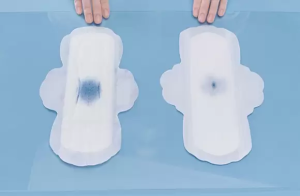Cotton has been a preferred material for centuries due to its softness, absorbency, and natural feel. At Winner Nonwovens, we specialize in producing high-quality cotton products using non-woven fabric technology. Many people wonder which is better, woven or nonwoven, when it comes to cotton products. Here we explore the differences, benefits, and applications to help understand why nonwoven fabrics have become an important choice in modern cotton products.
Understanding Woven and Nonwoven Fabrics
Woven fabrics are made by interlacing yarns in a crisscross pattern, creating a strong and structured material. They are commonly used in clothing, bed linens, and home textiles because of their durability and traditional appearance. Cotton woven fabrics maintain softness but often require more processing to enhance performance for certain applications.
Nonwoven fabrics, on the other hand, are made by bonding fibers together without weaving or knitting. At Winner Nonwovens, we focus on cotton-based nonwoven fabrics, which preserve the natural qualities of cotton while adding flexibility, absorbency, and softness. The fibers are entangled mechanically or with water pressure, forming a strong yet gentle fabric that works well for medical, personal care, and household products.
Advantages of Nonwoven Fabrics in Cotton Products
Nonwoven fabrics offer several benefits for cotton products. They are lightweight, breathable, and highly absorbent, making them suitable for applications where contact with skin and moisture management is important. Because they do not require weaving or knitting, nonwoven fabrics can be produced quickly and consistently, providing reliable quality across large batches.
Our cotton-based nonwoven fabrics are gentle on the skin, making them ideal for baby wipes, cosmetic pads, facial tissues, and sanitary products. They also perform well in medical applications such as surgical pads, wound dressings, and protective covers, where hygiene and softness are essential.
Woven Fabrics in Specific Applications
While nonwoven fabrics excel in disposable and hygiene products, woven cotton fabrics remain preferred for clothing, towels, and bedding where durability, drape, and texture are priorities. Woven fabrics maintain their shape over time and can be washed and reused multiple times, making them suitable for long-term use products.
Why Nonwoven Fabrics Stand Out for Certain Uses
As a trusted non-woven fabric manufacturer, Winner Nonwovens emphasizes the benefits of nonwoven fabrics for applications that require softness, absorbency, and gentle care. Our cotton-based fabrics are produced without chemical additives, ensuring safety and comfort. Nonwoven fabrics also offer eco-friendly advantages because they are biodegradable and use natural cotton fibers responsibly.
Conclusion
When deciding which is better, woven or nonwoven, it depends on the intended use. Woven fabrics are excellent for garments, bedding, and long-lasting textiles, while nonwoven fabrics provide exceptional softness, absorbency, and hygiene performance for cotton products. At Winner Nonwovens, we focus on nonwoven fabrics to deliver cotton products that meet the needs of medical, personal care, cosmetic, and household applications. Understanding the strengths of nonwoven fabrics helps consumers and businesses make informed choices while enjoying the natural benefits of cotton.











